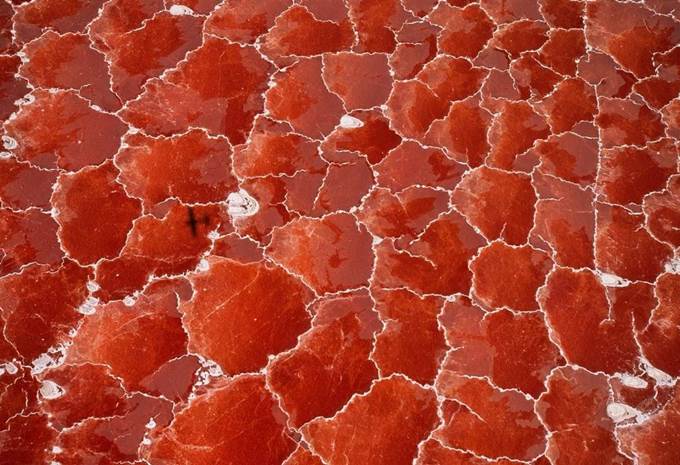

The world’s caustic body of water for so many species is home to some endemic species of fish that thrive in excessive alkaline.

An endemic species of fish, the alkaline tilapia, lives along the edges. Lake Natron, a salt or alkaline lake located in Africa’s great rift valley, emanates a warning sign with its red color. As isolated as the lake is (it wasn't even discovered by Europeans until 1954), there are no protections in place for the lake or its threatened flamingo population.įollow Marc Lallanilla on Twitter and Google+. This bright red lake is the worlds most caustic body of water, but not to everything. The serenity of Lake Natron - and its flamingo population - are threatened by a proposed hydroelectric power plant on the Ewaso Ngiro River, the main river feeding the lake. As shallow lakes in a hot climate, their water temperatures can reach as high as 106 degrees Fahrenheit (41 degrees Celsius). A by-product of this photosynthesis causes deeper water to turn bright red and shallow parts of the lake to take on a rusty orange color.-2.348486°, 35. Both are terminal lakes that do not drain out to any river or sea they are fed by hot springs and small rivers. The color of Lake Natron is typical of saline lakes with high evaporation rates, in which salt-loving microorganisms thrive using photosynthesis to make their own food. Lake Natron is one of two alkaline lakes in that area of East Africa the other is Lake Bahi. The flamingos' nests are built on small islands that form in the lake during the dry season. During breeding season, more than 2 million lesser flamingos ( Phoenicopterus minor) use the shallow lake as their primary breeding ground in Africa.


 0 kommentar(er)
0 kommentar(er)
